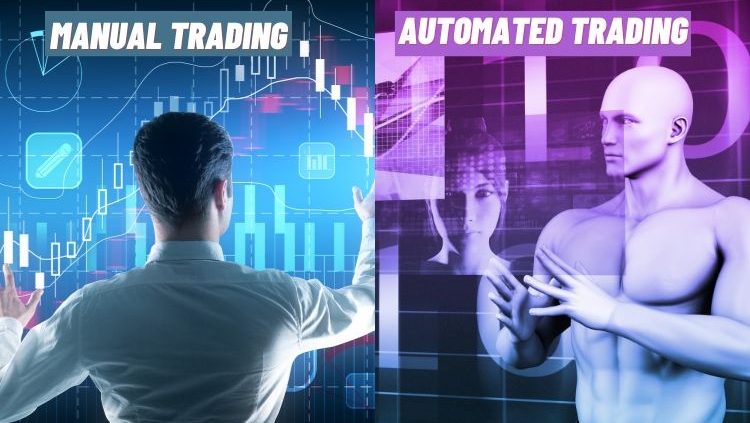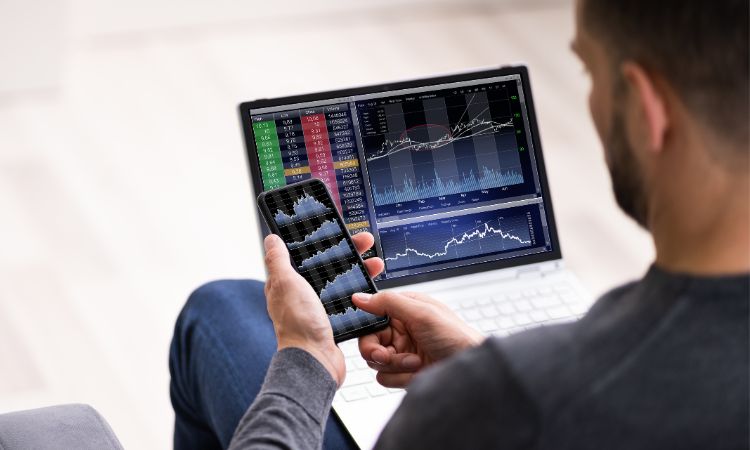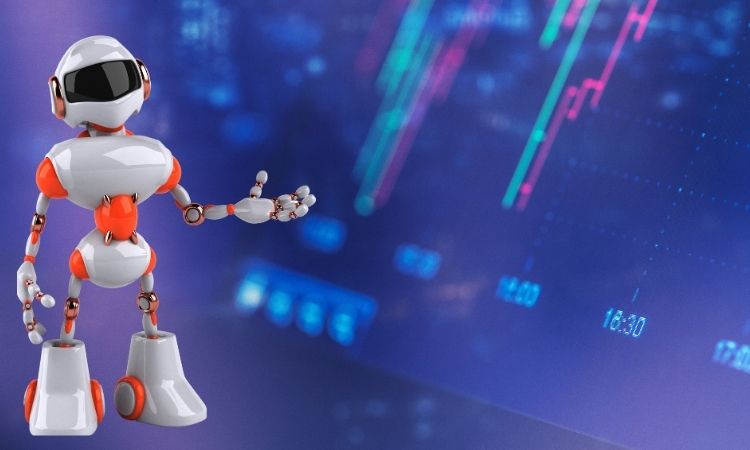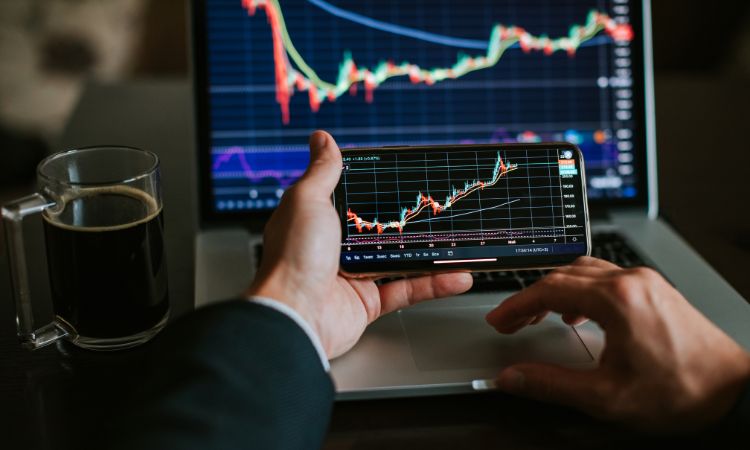Manual Trading vs Automated Trading
Automated and manual trading each have their advantages. Manual trading requires rational human decision-making, whereas automated trading is free of personal bias.
Manual trading is better suited to traders who prefer to monitor the market directly. Automated trading is ideal if you want to spend less time on it.
This article will discuss the following:
- Manual Trading vs Automated Trading
- Advantages & Disadvantages of Manual Trading
- Manual Trading Strategies
- Methods for evaluating a manual trading strategy.
- Advantages & Disadvantages of automated Trading
- Is automated trading profitable?
- Manual Trading Vs. Automated Trading: Which One Is Better?
This article compares automated vs manual trading to determine which is better for you.
What Is Manual Trading?
Purchasing and selling stocks without an automated system is known as manual trading. This type of trading requires more experience and knowledge than automated trading, which relies on market conditions and analysis to make decisions.
While manual trading has advantages, such as allowing traders greater control over their trades, it also has drawbacks.
Manual trading, for example, can be time-consuming because traders must constantly monitor the markets and ensure they are up to date on all the latest news and information.
Furthermore, manual trading can be highly stressful because there is always the risk of making a mistake that will cost you money.
Advantages & Disadvantages of Manual Trading
Advantages:
- Manual trading offers the advantage of considering all aspects of a trade before deciding.
- This includes fundamental analysis, technical analysis, and even personal factors such as emotion and psychology.
- Because traders make their own decisions, they can adapt and change their strategies as they see fit. This flexibility can be beneficial in volatile or rapidly changing markets.
Disadvantages:
- The main disadvantage of manual trading is that it can be time-consuming and challenging to keep up with all available information.
- This is especially true in fast-moving markets with much data to consider. Traders may also find it challenging to stick to their plan when experiencing emotions such as fear or greed.
Manual Trading Strategies
Manual trading strategies require the trader to actively participate in the market and make decisions based on various factors such as market conditions, price action, and the trader’s discretion.
Automatic trading methods are built into the software, which can trade on the trader’s behalf based on predetermined rules and criteria.
Some traders like manual trading techniques because they believe they have greater control over their trades. Some find automatic trading to be more productive and less emotionally taxing.
Ultimately, it is up to each trader to determine which form of trading strategy suits their needs and personality.
Methods for evaluating a manual trading strategy
A few methods can be used to assess a manual trading strategy.
- First, backtest on historical data. This indicates the strategy’s prior performance but doesn’t account for slippage or fees.
- Another method is the Monte Carlo simulation. Computer software randomly simulates market conditions to test your trading approach. This can be used to try the system in different market conditions and find weaknesses.
- Third, paper trade is the strategy. This involves making fake trades with real-time market data. This is a fantastic approach to test the technique and fix any faults before investing real money.
What Is Automated Trading?
Automatic trading uses automation programs that execute pre-set rules to initiate or exit a deal. Automated trading combines technical analysis with predetermined criteria to manage forex positions, such as open orders, stop losses, and trailing stops.
Advantages & Disadvantages of automated Trading
Advantages:
- One of the many benefits of automated trading is that it takes away the element of emotion. While placing trades manually, allowing your feelings to get in the way is easy, resulting in poor decisions.
- You can set up your automated trading system to make trades based on objective criteria. This can help you avoid making decisions based on how you feel.
- Another benefit of automated trading is that it might assist you in being disciplined. While manually placing trades, deviating from your trading plan is relatively easy.
- Yet, if you have an automated system, it will always obey your standards and regulations. This can assist you in sticking to your plan even when circumstances get difficult.
Disadvantages:
- One of the disadvantages of automated trading is that systems can fail. If there is a flaw in the coding of your system, it could lead to severe issues.
- In addition, an unplanned market event that your system needs help handling could cause problems.
Is automated trading profitable?
There are a variety of opinions on whether automated trading is more profitable than manual trading.
Automation can assist in removing emotion from trading, leading to more consistent earnings. According to other traders, manual trading allows traders to make decisions based on their own analysis and market conditions.
There is no conclusive answer to which strategy is the most profitable. It depends on the trading style and preferences of the individual trader.
Some traders are better off with manual trading, while others are better off with automated trading.
Manual Trading Vs. Automated Trading: Which One Is Better?
This section will examine manual and automatic trading to determine which is better.
Manual Trading |
Automated Trading |
|
|
Manual trading is more susceptible to the impact of one’s emotions than automatic trading. Automated trading completely rejects the positive effects of emotions, whereas manual trading capitalizes on these positive effects.
Trading manually and using automatic systems each have their distinct advantages. Automated trading eliminates the possibility of emotional bias, unlike manual trading, which relies on humans to make logical decisions.
Trading manually is preferable to trading automatically if you are the type of trader who likes to keep a close eye on the market.
How to enhance trading analysis during manual trading?
When it comes to manual trading, there are a few key things that you can do to enhance your analysis and improve your results.
- Ensure that you are using a reliable source of information. This could be a website for financial news, an economic calendar, or a trading forum.
- Before engaging in a trade, take the time to analyze the market conditions.
- Use technical analysis to determine probable entry and exit locations. You can utilize a variety of technical indicators, so choose one or two that work well for you and stay with them.
- While engaging in a trade, always apply risk management strategies. This entails setting stop losses and profit targets at specified levels. This allows you to reduce your losses while maximizing your gains.
- Finally, don’t get too worked up over your trades. It’s easy to get caught up in the thrill of a successful transaction or the heartbreak of a lost business.
- Allowing emotions to guide your trading selections will almost certainly result in poor results. Thus, at all times, remain calm, serene, and collected.
Why do 90% of traders fail in manual trading
- They need to follow a trading plan consistently.
- They need a strategy for trading in place.
- They want to have the last word at all times.
- They do not have any discipline.
- Many believe that trading is an easy endeavor.
- They ignore the management of risks.
- They don’t give winners a chance to escape.
- They engage in excessive trading.
- They do not analyze the trades that they make.
- They engage in trade as a leisure activity.
The reason for most new traders’ failure is that they trade way too large. They are eliminated from the competition after their first loss or a string of losses. Another typical error traders make that can result in financial losses is overtrading.
Intraday traders frequently make the following mistakes:
- Averaging their positions
- Not conducting sufficient research
- Overtrading
- Depending excessively on advice
Many day traders have suffered financial consequences as a direct result of these errors. In the intraday market, over 90 per cent of traders end up losing money.
Conclusion
Trading manually and trading using automatic systems each have their advantages. But they are not mutually exclusive.
That indicates that you can utilize either manual trading or automated trading, to a certain extent, depending on the market conditions at the time and your availability.
A comparison of trading systems shows that there are only so many best strategies. Combining the two approaches might help you reach your goals.
Each trader should follow a plan, but the trading strategy must also be adaptable because the market is volatile. These changes can be global (asset correlations, responses to specific statistics, and so on) or local (volatility adjustments, level responses, breakout/rebound patterns, and so on).
With Asset Revesting Doctors strategy , they came a long way from near-constant work, stress, and denial to be so close to their retirement that they could taste it.




